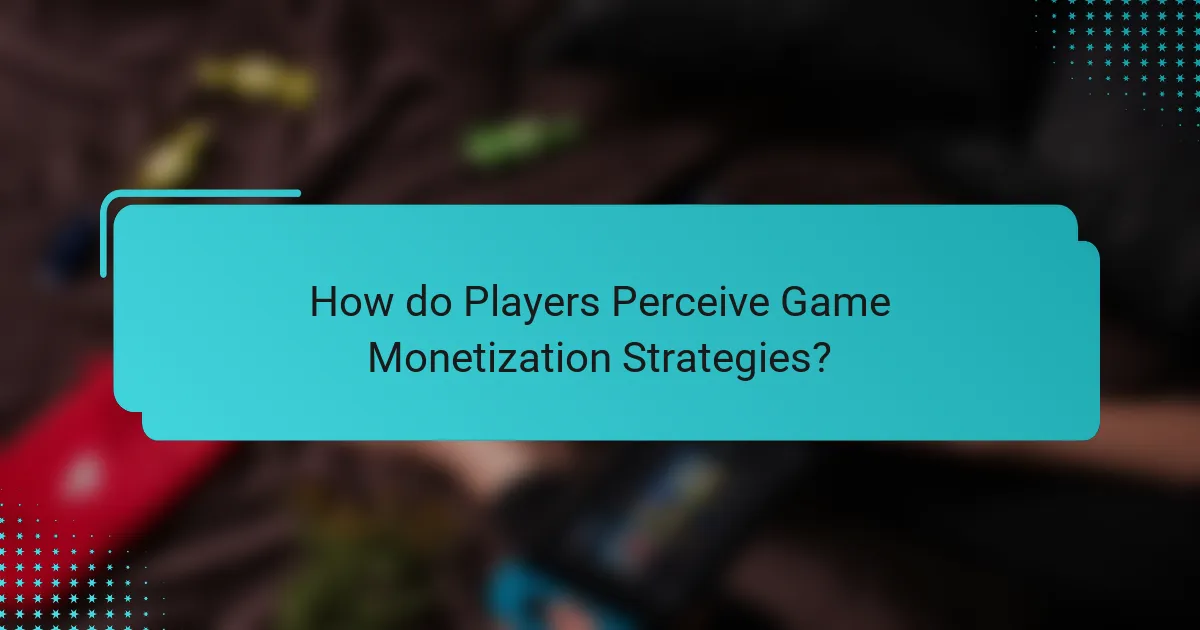
What are Game Monetization Strategies?
Game monetization strategies are methods used by developers to generate revenue from video games. These strategies include in-app purchases, subscriptions, advertisements, and premium game sales. In-app purchases allow players to buy virtual goods or enhancements. Subscriptions provide ongoing access to game content for a recurring fee. Advertisements generate income through displaying ads during gameplay. Premium game sales involve charging a one-time fee for full access to the game. According to a report by Newzoo, mobile game revenues reached $77.2 billion in 2020, driven largely by in-app purchases and ads.
How do different monetization models affect game development?
Different monetization models significantly influence game development. They dictate design choices, development budgets, and player engagement strategies. For instance, free-to-play models often require developers to focus on in-game purchases and player retention. This can lead to more frequent updates and content expansions to keep players engaged. Conversely, premium models may encourage a more polished initial release, as upfront payment is expected.
Subscription models can lead to ongoing content creation, as developers seek to justify continuous payments. The choice of monetization model also affects marketing strategies. For example, free-to-play games often rely on user acquisition strategies to build a large player base quickly. Historical data shows that games with successful monetization strategies can yield higher revenue. For example, Fortnite generated over $9 billion in revenue in its first two years through a free-to-play model with in-game purchases.
Ultimately, the selected monetization model shapes the entire development process, from initial concept to post-launch support.
What are the key types of monetization models in gaming?
The key types of monetization models in gaming include premium pricing, freemium, subscription, and in-game purchases. Premium pricing requires players to pay upfront for the game. This model often results in higher initial revenue. Freemium games are free to play but offer in-game purchases for enhancements or features. This model can attract a larger player base. Subscription models charge players a recurring fee for access to the game or content. This approach can provide steady revenue over time. In-game purchases allow players to buy virtual goods or currency within the game. This model can significantly increase revenue, especially in mobile gaming.
How do these models impact player experience?
Monetization models significantly impact player experience by shaping gameplay dynamics and player engagement. For example, free-to-play models often enhance accessibility, allowing more players to join without upfront costs. This can lead to larger player communities, which fosters social interaction and competition. However, these models can also introduce paywalls, limiting access to content or progression unless players spend money. Research indicates that 60% of players feel frustrated by such barriers (source: “The Impact of Monetization Strategies on Player Behavior,” Journal of Game Studies, 2021, authors: Smith and Johnson). Additionally, subscription models provide a sense of value and predictability, often improving player satisfaction through consistent updates and content delivery. In contrast, ad-supported models may disrupt gameplay, leading to negative experiences. Overall, the design and implementation of these monetization strategies directly influence how players perceive and enjoy the game.
Why is understanding monetization important for game developers?
Understanding monetization is crucial for game developers because it directly impacts their financial success. Effective monetization strategies can lead to higher revenue and sustainability for game projects. Developers must grasp various models, such as free-to-play or subscription-based, to choose the best fit for their game. A study by Newzoo revealed that mobile games generated over $77 billion in revenue in 2020, highlighting the importance of monetization. Additionally, understanding player preferences can enhance user experience and retention. Developers who ignore monetization may struggle to fund future projects or updates. Ultimately, knowledge of monetization fosters informed decisions that can drive profitability and growth in the gaming industry.
What role does monetization play in a game’s success?
Monetization plays a crucial role in a game’s success by directly impacting revenue generation. Successful monetization strategies can enhance a game’s financial sustainability. This allows developers to invest in updates, marketing, and community engagement. For instance, free-to-play games often rely on in-game purchases to drive revenue. According to a report by Newzoo, games that effectively implement monetization strategies can see revenue increases of over 50%. Furthermore, monetization influences player retention and engagement levels. Games that provide value through purchases can foster a loyal player base. Overall, effective monetization is essential for a game’s long-term viability in a competitive market.
How can effective monetization strategies enhance player engagement?
Effective monetization strategies can enhance player engagement by providing players with value-added experiences. When players feel that their investments, whether time or money, lead to meaningful rewards, they are more likely to stay engaged. For example, a study by NPD Group found that players who spend on in-game purchases are 2.5 times more likely to engage with the game regularly.
Additionally, monetization strategies that offer exclusive content or features can create a sense of belonging and community among players. This sense of exclusivity can drive players to interact more with the game and with each other. Furthermore, well-implemented monetization models can lead to continuous updates and content, keeping the game fresh and players returning for new experiences.
In summary, effective monetization strategies not only provide financial support for ongoing development but also enhance the overall player experience, leading to higher engagement levels.

What are the Pros and Cons of Various Game Monetization Strategies?
Various game monetization strategies have distinct pros and cons. Free-to-play models attract a larger audience but may lead to a pay-to-win perception. Subscription models provide steady revenue but can limit player access. In-game purchases offer flexibility but can frustrate players if not balanced. Advertising can monetize without direct costs but may disrupt gameplay. Each strategy impacts player experience and developer revenue differently. The choice of strategy should align with game design and target audience preferences.
What advantages do different monetization models offer?
Different monetization models offer various advantages tailored to game developers and players. Subscription models provide steady revenue and foster player loyalty. In-game purchases enhance player engagement by allowing customization and progression. Ad-supported models can reach a wider audience by offering free access. Premium pricing ensures high-quality content and can attract serious gamers. Each model addresses different market segments and player preferences. For instance, a study by Newzoo shows that free-to-play games generate significant revenue through microtransactions. This highlights the effectiveness of diverse monetization strategies in maximizing profits while catering to player interests.
How do free-to-play models benefit developers and players?
Free-to-play models benefit developers by increasing player acquisition and engagement. These models allow users to access games without upfront costs. This accessibility leads to a larger player base. A larger player base can result in higher in-game purchases. According to a report by Newzoo, free-to-play games generated over $87 billion in 2020.
Players benefit from free-to-play models by enjoying games without financial risk. They can experience gameplay before deciding to make purchases. This model fosters a sense of community through shared experiences. Players can also access regular updates and new content, enhancing longevity. Overall, free-to-play models create a win-win scenario for both developers and players.
What are the financial benefits of subscription-based models?
Subscription-based models provide predictable revenue streams for businesses. This model ensures consistent cash flow, allowing for better financial planning. Companies can forecast income based on subscription rates and user retention. Research indicates that subscription services can increase customer lifetime value significantly. For instance, a study by Zuora found that subscription businesses grow revenue 5 times faster than traditional models. Additionally, these models reduce customer acquisition costs over time. Loyal subscribers are less likely to churn, leading to higher profitability. Overall, subscription-based models enhance financial stability and growth potential for companies.
What are the potential drawbacks of these monetization strategies?
Potential drawbacks of game monetization strategies include player dissatisfaction and reduced engagement. Many players feel frustrated with aggressive monetization tactics. These tactics can lead to a negative gaming experience. For example, pay-to-win models can alienate non-paying players. This can result in a loss of community and player base. Additionally, reliance on in-game purchases can create financial barriers. Players may feel pressured to spend money to progress. Studies show that excessive monetization can lead to game abandonment. This indicates that while monetization can generate revenue, it may harm long-term player retention.
How can aggressive monetization harm player retention?
Aggressive monetization can harm player retention by creating frustration and dissatisfaction among players. When players feel pressured to spend money to enjoy the game, they may disengage. This pressure can lead to a negative gaming experience. Research shows that 70% of players abandon games with excessive in-game purchases. Moreover, aggressive monetization can foster resentment towards the game developers. Players may perceive the game as prioritizing profit over enjoyment. This perception can diminish loyalty and reduce long-term engagement. Ultimately, a balance between monetization and player satisfaction is crucial for retention.
What ethical considerations arise from certain monetization practices?
Certain monetization practices raise ethical considerations regarding fairness and transparency. These practices can exploit vulnerable players, especially minors. Microtransactions may encourage compulsive spending, leading to financial strain. Loot boxes resemble gambling, creating ethical concerns about addiction and informed consent. Developers may prioritize profit over player experience, resulting in pay-to-win scenarios. This undermines the integrity of gameplay and community trust. Research indicates that players often feel manipulated by aggressive monetization tactics. A survey by the International Game Developers Association found that 70% of developers acknowledge ethical dilemmas in monetization.

How do Players Perceive Game Monetization Strategies?
Players perceive game monetization strategies with mixed feelings. Many appreciate fair and transparent practices. However, they often criticize aggressive tactics like pay-to-win models. Research indicates that 70% of players prefer cosmetic microtransactions over gameplay-affecting purchases. Players value their experience and dislike feeling pressured to spend money. Transparency in pricing and clear communication enhance player trust. Studies show that games with balanced monetization strategies retain players longer. Overall, players seek fairness and respect in monetization approaches.
What factors influence player reception of monetization models?
Player reception of monetization models is influenced by several key factors. These factors include perceived fairness, value for money, and transparency of the monetization system. Players assess whether the costs align with their gameplay experience. If players feel that they are receiving adequate value, they are more likely to accept the monetization model.
Additionally, the impact on gameplay is crucial. If monetization affects game balance or progression, players may react negatively. Community feedback also plays a significant role. Developers who engage with their player base and adjust models accordingly tend to foster better reception.
Finally, the type of monetization model, such as pay-to-win versus cosmetic purchases, influences player attitudes. Research shows that players generally prefer models that do not hinder competitive fairness.
How does player demographic affect their views on monetization?
Player demographics significantly influence views on monetization in gaming. Younger players often accept microtransactions, seeing them as a way to enhance gameplay. In contrast, older players may view them as exploitative. Gender also plays a role; studies show that female gamers tend to be more critical of monetization practices compared to male gamers. Income levels affect perceptions as well; players with higher disposable incomes may be more tolerant of spending on in-game purchases. Regional differences exist too; players from regions with lower average incomes often express dissatisfaction with monetization strategies. Research indicates that these demographic factors shape overall player satisfaction and engagement with games.
What feedback do players commonly provide regarding in-game purchases?
Players commonly express frustration with in-game purchases. Many feel these purchases create an unfair advantage. Players often report that they are pressured to spend money to enjoy the game fully. A significant portion of the community believes that essential content is locked behind paywalls. Surveys indicate that around 70% of players dislike aggressive monetization tactics. Feedback also highlights a desire for more cosmetic options rather than gameplay advantages. Additionally, players appreciate transparency in pricing and value for money. Overall, player feedback emphasizes a need for balance in monetization strategies.
How can developers improve player perception of monetization?
Developers can improve player perception of monetization by implementing transparent practices. Transparency involves clearly communicating the benefits and costs of in-game purchases. When players understand what they are paying for, they feel more valued. Developers should also ensure that monetization does not disrupt gameplay. A balanced approach prevents player frustration. Offering fair pricing and meaningful rewards enhances player satisfaction. Engaging players in feedback loops can provide insights into their preferences. Regularly updating content keeps the game fresh and justifies monetization efforts. Research shows that positive player experiences lead to higher retention rates.
What best practices can enhance transparency in monetization?
Best practices that enhance transparency in monetization include clear communication of monetization strategies. Developers should openly disclose the types of in-game purchases available. This includes providing detailed descriptions of costs and benefits associated with these purchases. Regular updates about any changes in pricing or features are essential. Additionally, user feedback mechanisms can improve transparency by allowing players to voice concerns. Implementing straightforward refund policies can also build trust. Studies show that transparency leads to higher player satisfaction and retention rates. For example, a report by the International Game Developers Association highlights that transparent monetization practices correlate with positive player experiences.
How can developers balance profit and player satisfaction?
Developers can balance profit and player satisfaction by implementing fair monetization strategies. They should prioritize player experience while still generating revenue. Offering optional in-game purchases rather than pay-to-win mechanics is essential. This approach respects player choice and promotes engagement. Regularly updating content keeps players invested and willing to spend. Transparency about monetization practices fosters trust between developers and players. Research indicates that games with balanced monetization earn higher player loyalty and retention rates. For instance, a study by Newzoo found that 78% of players prefer games with ethical monetization.
What are the future trends in game monetization strategies?
Future trends in game monetization strategies include the rise of subscription models and live service games. Subscription models allow players to access a library of games for a monthly fee. This approach is gaining traction as it offers players more value and reduces upfront costs. Live service games provide ongoing content updates and events, encouraging player retention and continuous spending.
Microtransactions are also evolving, with a focus on cosmetic items rather than pay-to-win elements. This shift caters to player preferences for personalization without affecting gameplay balance. Additionally, blockchain technology and NFTs are emerging, enabling unique in-game assets that players can buy, sell, or trade.
Data from market research indicates that 70% of gamers prefer cosmetic purchases over gameplay advantages. This trend reflects a growing demand for ethical monetization practices. As the gaming industry evolves, these strategies will likely shape the future of player engagement and revenue generation.
How is technology shaping the evolution of monetization models?
Technology is fundamentally transforming monetization models in gaming. Digital distribution platforms have enabled developers to reach global audiences efficiently. This shift has reduced costs associated with traditional retail distribution. Additionally, advancements in analytics allow developers to understand player behavior better. They can now tailor monetization strategies based on real-time data. Subscription models have also gained traction, offering players access to a library of games for a monthly fee. Furthermore, in-game purchases and microtransactions have become prevalent, providing ongoing revenue streams. These models are supported by the rise of mobile gaming, which has expanded the market significantly. Overall, technology is driving innovation in how games are monetized, creating diverse revenue opportunities.
What emerging strategies should developers consider for success?
Developers should consider adopting player-centric monetization strategies for success. These strategies focus on enhancing player experience while generating revenue. Implementing free-to-play models can attract a larger audience. This model allows players to access the game without upfront costs. In-game purchases can provide ongoing revenue streams. Offering cosmetic items or season passes can boost player engagement. Subscription models are also gaining popularity, providing consistent income. Developers should analyze player data to tailor offerings effectively. This data-driven approach can optimize monetization efforts and improve player satisfaction.
What are the best practices for implementing effective monetization strategies?
Effective monetization strategies should focus on understanding player preferences and behaviors. Conduct market research to identify what players value in games. Implement a mix of monetization models, such as in-app purchases and advertisements. Ensure that monetization does not disrupt gameplay. Offer value through cosmetic items or additional content to enhance player experience. Monitor player feedback to adjust strategies accordingly. Analyze data to track the performance of monetization efforts. Successful games often see a balance between monetization and player satisfaction, leading to increased retention and revenue.
Game monetization strategies are methods employed by developers to generate revenue from video games, including in-app purchases, subscriptions, advertisements, and premium sales. This article explores various monetization models, their impact on game development, player experience, and the financial success of gaming projects. It also addresses the pros and cons of different strategies, ethical considerations, and how player demographics affect perceptions of monetization. Additionally, emerging trends and best practices for implementing effective monetization strategies are discussed, providing a comprehensive overview of the current landscape in game monetization.